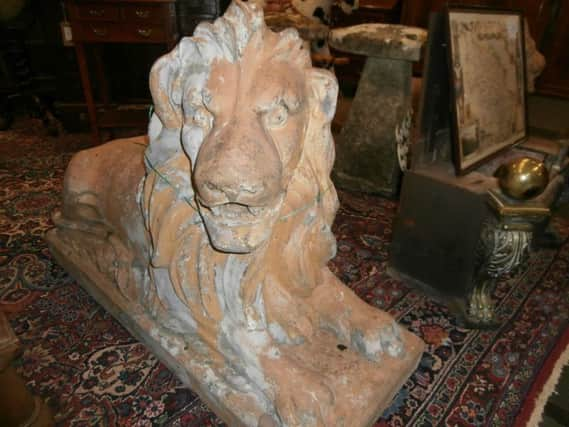When gnome fancying was an upper class pursuit


I love May, with its two bank holidays, and my birthday at the end of the month. May is the ideal month to get out in the garden (if you’re lucky enough to get some spare time), so I thought it would be a good chance to show off this imposing pair of garden ornaments.
These lions really are something special and their price tag confirms their value. They are on sale for an incredible £4,500. They’ve become quite at home at the centre, and lots of visitors remark on their size and how spectacular they are. At this time of year lots of collectors come into the centre looking for that perfect piece for their garden, and antique ornaments, planters and tools make unusual features in a modern garden.
Advertisement
Hide AdAdvertisement
Hide AdOne of the pleasures of collecting gardening antiques is that they do not take much looking-after. A 100-year-old antique wheelbarrow can be prettily used as a planter and doesn’t need to be renovated, restored or pampered like our indoor antiques!
The ultimate gardening ornament has to be the gnome. The earliest gnomes date from the 18th century, but they became established during the Victorian era thanks to Sir Charles Isham who developed a miniature rock garden at his Northamptonshire home, Lampart Hall, populated by terracotta gnomes!
Gnome fancying was, at this time, an upper class pursuit, but as production peaked in the 1930s, they became a symbol of the suburban middle classes. Victorian terracotta gnomes like those so loved by Sir Charles could be worth £500. Twentieth century examples aren’t worth quite so much and as one would expect, the more unusual gnomes fetch the highest prices. Many can be picked up for under £50.
As well as decorative items, antique garden furniture is also popular. Wrought or cast iron items, like swings, benches, tables or gates are greatly in demand. Made from around 1800 onwards, the most prolific production was during the Victorian era. Whilst earlier pieces are sometimes more expensive, what is most important is the decorative appeal of the piece and the size- a 19th century wrought iron bench could sell for as much as £1,200.
Whether bought from garden centres or the vintage marketplace, it’s wonderful to see items used and valued by previous generations enjoying a new lease of life in today’s modern gardens.